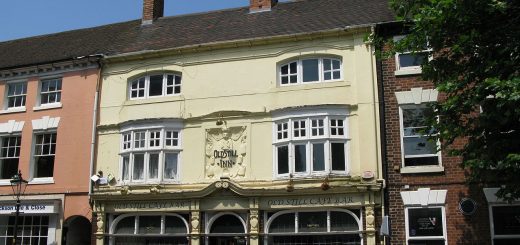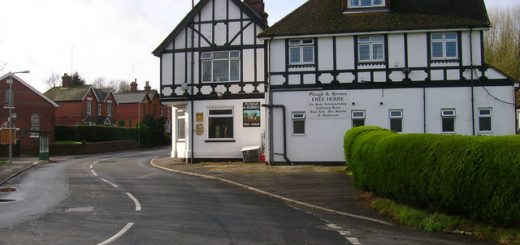Combe Bank
Combe Bank School was founded in 1924, but the Grade I listed Palladian style mansion it occupies dates from 1720 and was built for John Campbell, 4th Duke of Argyll (Born1693 – Died 9 November 1770). Since Combe Bank has been home several many notable people, including Dr William Spottiswoode (Born 11 January 1825 – Died 27 June 1883) who was a mathematician, physicist, President of the Royal Society and printer for the King. The Catholic Archbishop of Westminster, Cardinal Henry Edward Manning (Born 15 July 1808 – Died 14 January 1892) grew up here and in the early 20th century it was bought by Ludwig Mond (7 March 1839 – 11 December 1909) the German-born chemist and industrialist.
 However, according to tradition, neither of the above gentlemen are thought to haunt Combe Bank, it is instead Mary Shirley (née Meredith), Countess Ferrers/Lady Campbell, (Born 1727 – Died 1807). She was the former wife of Laurence Shirley, 4th Earl Ferrers (Born 18 August 1720 – Died 5 May 1760) and later married Lord Frederick Campbell (Born 20 June 1729 – Died 8 June 1816), the 4th son of John Campbell, 4th Duke of Argyll.
However, according to tradition, neither of the above gentlemen are thought to haunt Combe Bank, it is instead Mary Shirley (née Meredith), Countess Ferrers/Lady Campbell, (Born 1727 – Died 1807). She was the former wife of Laurence Shirley, 4th Earl Ferrers (Born 18 August 1720 – Died 5 May 1760) and later married Lord Frederick Campbell (Born 20 June 1729 – Died 8 June 1816), the 4th son of John Campbell, 4th Duke of Argyll.
The following story from the Kent and Sussex Courier entitled ‘The ghastly ghouls rumoured to haunt our sleepy district’ dates from 31 October 2008. ‘Back in Sundridge, Combe Bank is the site of an unusual burial; that of a thumb. This single digit was all that was left of Lady Frederick Campbell after she burned to death in a tower nearby. In a Dynasty-standard storyline, she’d been cursed by her first husband, the Earl of Ferres, to die a death more painful than his own; he was hanged for the murder of a steward who was due to testify in Lady Ferres’ divorce petition, and his wife was the one who shopped him. I’ll give you a moment to work that all out… anyway, the ghost of Lady Frederick Campbell (he was her second husband), is said to haunt the estate. No-one reports whether the phantom is minus a thumb.’
Ferrer’s was hanged at Tyburn on 5 May 1760 after being imprisoned in the Tower of London. His body was later exhibited at Surgeon’s Hall before being dissected. Lady Campbell died in an accidental fire at Combe Bank on 25 July 1807. Her husband then sold the house 1813 for £40,000.
The events and the ghost are also mentioned in ‘The Story of My Life, volumes 4-6 (1900) by Augustus J. C. Hare’, who suggests that spontaneous combustion was the cause of her death. “Lady Frederick Campbell lived here. Her first husband was the Lord Ferrers who was hanged, and some evidence which she gave was instrumental in bringing about his condemnation. Lord Ferrers cursed her, saying that her death would be even more painful than his; and so in fact it was, for in 1807 she was burnt in one of the towers of the house, from spontaneous combustion it is said. Nothing was found of her but her thumb, she was so completely consumed, and ever since it is said that the ghost of Lady Frederick Campbell wanders in the grounds at night, brandishing her thumbless hand, and looking for her lost thumb. The place lends itself to this from its wonderful green glades lined with cedars and guarded by huge grey stone vases.
“Coomb Bank was afterwards bought by the Claytons, who spent all they had in the purchase and had nothing left for keeping it up, so eventually they sold it to Mr. Spottiswoode, the King’s Printer, to whom the monopoly of printing Bibles and Prayer-books has been the source of a large fortune. Mr. Spottiswoode himself is a most remarkable man, who, for hours before his daily walk to the City, is occupied with the highest mathematical speculations, and returns to spend his evenings in studies of the most abstract nature. It is said that the present generation is more indebted to him than to any other person for its improved powers of analysis. He has made no important discoveries yet, but he probably will make them, if he lives long enough. His character seems to be a wonderful combination of profound knowledge and power and profound humility.”




Recent Comments